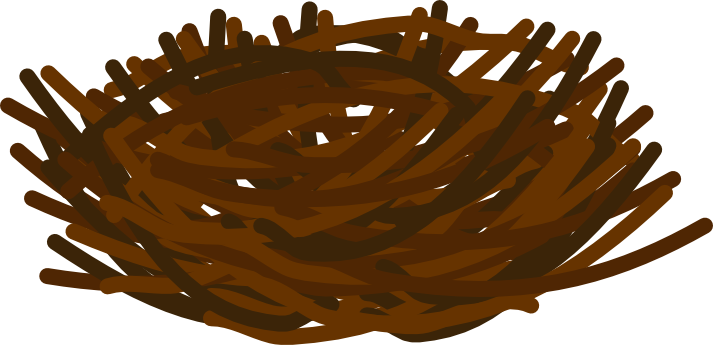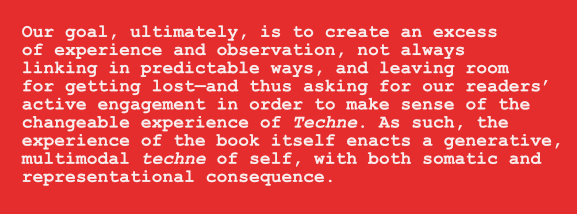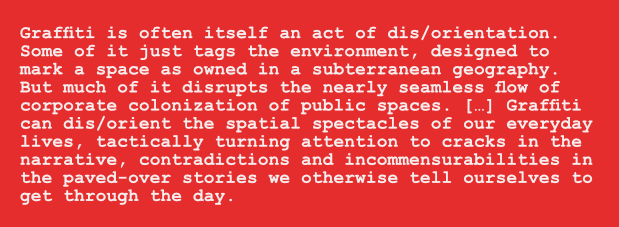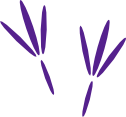





























“Graffiti” is a metaphor explicitly addressed by the authors of Techne: Queer Meditations on Writing the Self as an inspiration for their project, even to the point of including a video graffiti wall in the final chapter. The authors see their work in part “as academic graffiti [...] on the ivy tower and in the hallowed halls of academe” (Mobilities 6a), as a transgressive performance of self on institutional margins in a way that both relies on and challenges traditional scholarly norms. Like desks for creating scrapbooks and blueprints, graffiti walls are spaces for creative making, but in a way that foregrounds self-expression and resistance to normalizing orientations. Thus, sample elements include blocks of quotes and snippets of the many videos through which the theoretical, re-orienting work is performed and through which the authors’ own stories (and their work/processes of writing the self) are performed and foregrounded.
This organizing metaphor also foregrounds the risks of such stories as research materials in a scholarly collection; these are very personal stories inscribed on the margins of academia in public space, which opens the inscriber up to significant vulnerability. Webtext-storytellers looking to this collection as a model need to consider whether they too might get away with scrawling such graffiti (and what penalties they as perpetrators might incur in the process). This illustrated presentation might also come across as somewhat disorienting to individuals expecting a more linear arrangement. Productive disorientation in exploring presentations of self is indeed one of the authors’ goals (Introduction 6), but the design of this review obscures the fact that, underlying the creative chaos, Techne features a well-organized table of contents that makes the collection as a whole easy to navigate. As a word of academic graffiti, Techne invites creative wandering and challenges linear reading structures, while still offering the permanence of a firm foundation for organized reading and theoretical inquiry. It is a work of critical, intricately crafted stories and theorizations of how to write with the self that invites readers to pause and consider the underlying, orienting forces shaping their own self-writing—and (like the magpie's paint-dipped clawprints) dares readers to join in their dangerously playful resistance.